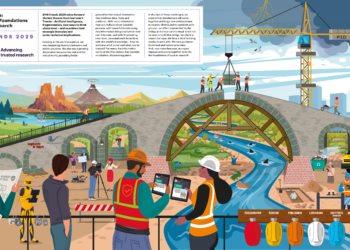I’ve started reading a book that could turn out to be a real favorite. Entitled, “New Media: 1740-1914,” the book deals with the social ramifications of new media up to the era of broadcast radio. I’m only a very little way into the book, but it’s already fascinating. For instance, I’d always thought that the tendency for newspapers to have “telegraph” or “telegram” in their names was homage to the electric telegraph; instead, it stems from the optical telegraph, a notion we now know as semaphore but that, in the late-18th and early-19th centuries created an intellectual notion that information could unite a community. While the optical telegraph’s day passed quickly, the mental model persisted, and was elaborated upon first by newspapers and then the electric telegraph, two developments that worked somewhat harmoniously.
So, newspapers have long been about creating a common knowledge, a community substrate.
A good portion of the discussion is vintage Shirky, with familiar tropes on the “accident” of the newspapers and the cross-subsidization of advertising and reporting that was caused by a supply-based economy:
. . . media is now created by demand rather than supply — which is to say the next web page is printed when someone wants it to be printed, not printed and stored in a warehouse in advance if someone who may want it.
It should be noted that Shirky’s observation about newspapers as an accident isn’t an indictment, just a fact of life. Most of human history has been ad hoc and accidental.
And accidents abound today. For instance, cable television companies are now, accidentally, broadband providers, and telephone companies are now, accidentally, mobile data providers. Computer companies are now music companies, and search engines now provide most of our digital maps.
Shifting to an information abundance economy (or a demand-based information economy) has led to dramatic decreases in the ability for content producers to charge premiums to advertisers or subscribers. They no longer hold the audience.
Shirky is concerned that mid-sized cities will be the losers in this, lacking sufficient local focus to charge a targeting ad premium and lacking the scale to charge a distribution ad premium. Caught in the middle, they will vanish, leaving a vast swath of America without accountability journalism — beat reporters sitting in meetings, asking questions, pushing for answers.
There’s already evidence this is happening, from Seattle to Denver. In fact, John Temple, formerly of the Rocky Mountain News, recently gave a talk in which he reflected on the reasons for their failure, which largely came down to an inability to look beyond the battle for print ascendancy:
The problem was we were fighting the last war. We didn’t understand what was happening to the playing field. Media companies used to think they were in control. That they could “own” a market. What we didn’t take into account is that in this new era, consumers were going to be in control.
And now Denver is down to one paper, and it’s hoping to “return to profitability this year.”
Journals emerged at about the same time as common newspapers (early 18th century), and unite and define intellectual communities, as well. And journals have benefited from the same “supply-side” information asymmetry.
Social change is hard to predict, and it’s completely non-linear. There could be a lacuna in journalism, just as there could be a void in scholarly publishing if smaller journals find themselves betwixt and between investing and focusing in this new digital age.
Is there a void appearing as author-pays journals and large journals diverge? Will something vital fall through the gap?
Discussion
2 Thoughts on "Is There a Hole in the Middle of the Information Age?"
An answer to possibly filling the void of the loss of accountable journalism is with online nonprofit news sites. San Diego has the San Diego News Network and the Bay Area News Project is in development in San Francisco. Whether the Bay Area News Project will help bring the demise of San Francisco’s metro newspapers is a question I blogged about after the project was announced last month. http://bit.ly/mKJfQ. Hyperlocal news sites are also an alternative. http://bit.ly/Kz2Hm. The question is can any of these online ventures make money?

![Reblog this post [with Zemanta]](http://img.zemanta.com/reblog_e.png?x-id=3fd91fba-41b8-4bb8-972c-c77ee2bcaa2e)


